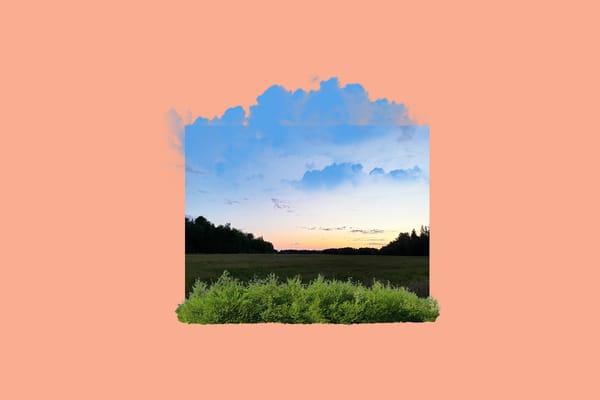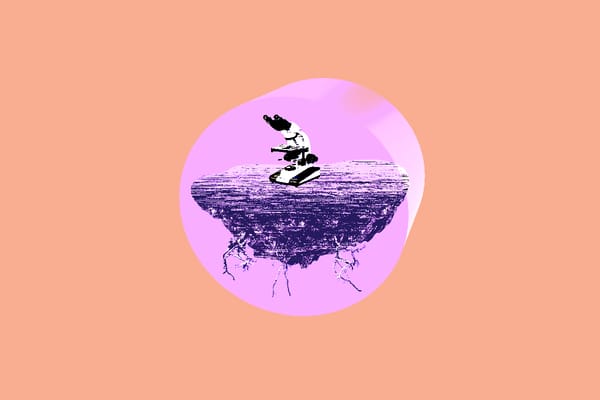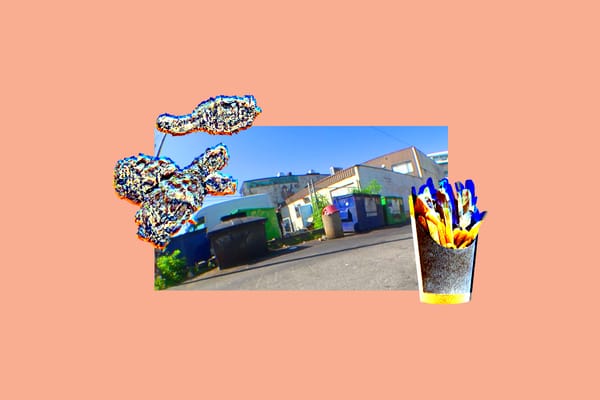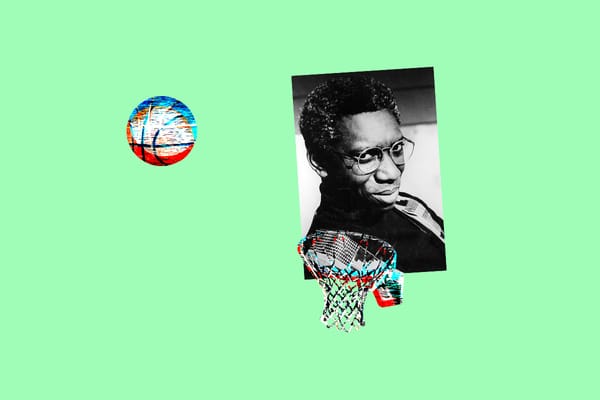The delight of discovery
Figuring out a feeling in the digital age.
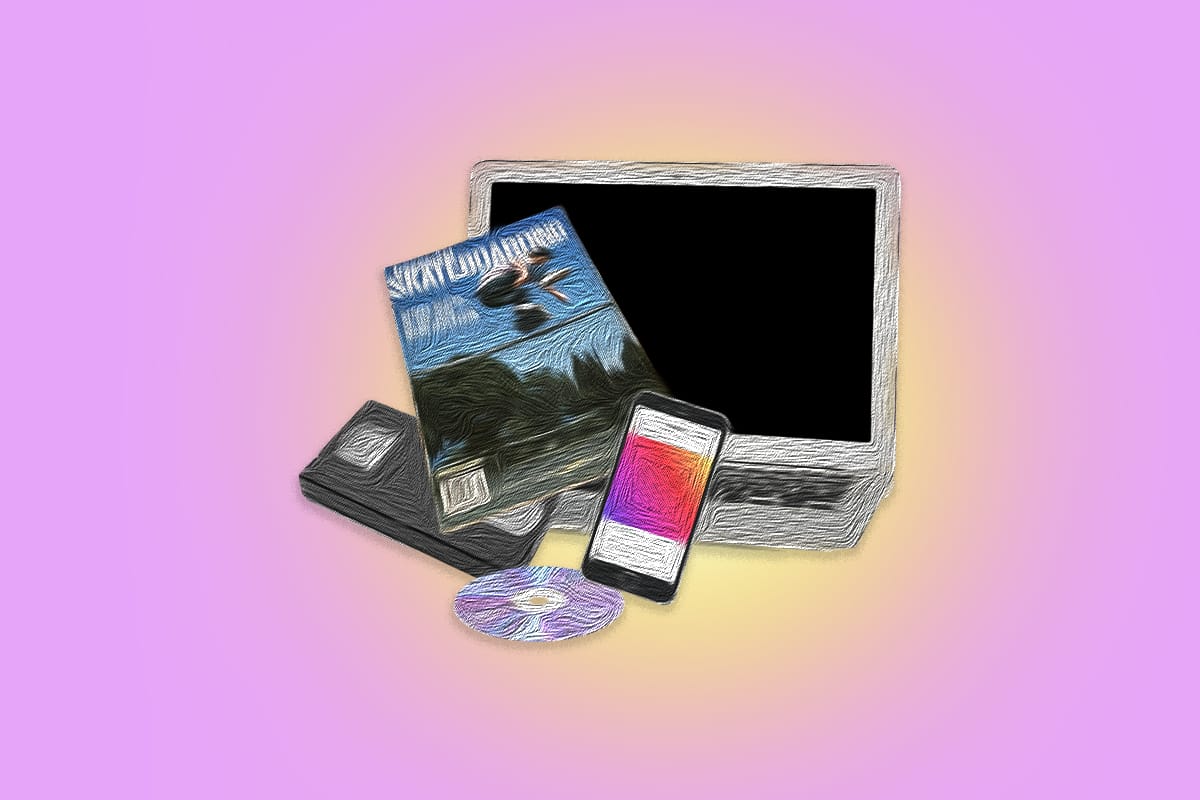
It’s not that they don’t work; it’s that they sort of work. The algorithms that push and pull us through our various apps succeed, more or less, in what they’re designed to do. They gobble up our user data to build a profile of what they think our interests are, then show us the content it decides we’re most likely to shell out our attention for, and, in turn, exposes us to ads that make them money.
However, these algorithms are clumsy. Boorish, even. Yes, I looked up the account of a professional skateboarder. Does that mean I want to see a bulldog on a skateboard break a world record for how many human beings whose legs it rode between? Yes. Well, no. This isn’t what I’m actually interested in, but I will watch it.
That’s the thing. These vast, complicated data processes don’t have to get everything right; they just have to be sort of right when curating what they think we’ll like. A whiff is fine as long as we stay long enough to watch the follow-through because then they have another chance to swing. And they’ll keep swinging content at us whether it relates to our interests or not.
The result is a style of “curation” that can feel disconnected, dull, and overtly transactional. That’s why it seems like such a revelation when something breaks through the crush of content and can make me feel, well, anything. Which is what happened when a few skateboarding tricks teased in an Instagram story recently compelled me to click on a link. I then found myself on filmer and editor Nico Marti’s YouTube channel watching ab, Alan Bell’s latest video part — a breakthrough.
The discovery of Bell’s skating and Marti’s edit left me feeling stoked in a way that I felt a certain nostalgia for. In the way flipping through a new skate mag each month made me feel as a kid. How a needling sense of anticipation and awe became the foundation of my entire being as I pushed Flip’s Sorry into the VCR for the first time. That hungry sense of wonder would surface each time I watched a new video. Yes, the on-board action was the main attraction and would inspire me to spend countless hours apeing whatever I saw on screen, but it also came to be about the soundtracks and visual aesthetics that wove emotion through and gave a soul to this physical act.
It made me think of how often I put on an album from an artist I first learned of thanks to a skate video. While Momentum Wheel’s Un Momentum Por Favor holds up surprisingly well for an offering from a wheel company, it’s Chad VanGaalen’s music, which I first heard in Keegan Sauder and Rick McCank’s shared section back in 2007, that has been a favourite ever since. I remember how eager I was for the video to end so I could get to the credits and find out whatever that song was (“Clinically Dead” from the album Infiniheart). VanGaalen’s wavering vocals were at once haunting and powerful, carrying his twisting, wry, and fantastical lyrics through angular guitar riffs, bleeps, bloops, and untraceable sounds made on instruments he builds himself from scraps of wood and circuit boards.
VanGaalen is also a lifelong skateboarder and an illustrator, having hand-drawn wildly intricate, bizarre, and beautiful animations for his own music videos. Now, all these years later, his is a sound and aesthetic I’ve continued to love, and I found it thanks to skateboarding. After getting sparked by Alan Bell and revisiting Un Momentum Por Favor and VanGaalen’s music, I wondered if they knew that same feeling, what I’d come to call the delight of discovery.
Benny barked as they made their way down to the river. VanGaalen had answered the phone as another dog was coming up the path, and now he was apologizing to its owner and me as Benny continued his tirade of yips and yaps. Once shushed, VanGaalen told me how he first started skateboarding in the late ‘80s in Calgary, Alberta. As the decade turned to the ‘90s, he began exploring the streets with classmate and criminally unheralded Canadian skateboarding legend Dwight Pineau. With a relative dearth of available skate media at the time, watching Pineau ollie the net at a local tennis court was a firsthand account of the potential a person with a skateboard holds.
However, while formative, what first got him hooked wasn’t what could be done on a skateboard but the skateboard itself. “One hundred percent… I was changed forever by the Pushead,” he said, recalling his first encounter with an old Zorlac board graphic. Inspired, he’d take a silkscreening course in school and fall in love with the process behind the art. Eventually, he’d start turning his drawings into animations, and initially, like with silkscreening, VanGaalen was doing it all by hand. It was an act of emergence.
“I was doing morphological stuff at the time…. It’s strange when you just let an animation evolve [and see] what it brings out in you. For me, it’s this weird sort of bubbly, mucus texture that starts making shapes. I don’t know if it’s my subconscious or if it’s like the pencil or my own mind — I’m not really sure what it is — but it’s interesting because you see people like Bruce Bickford [and there’s] this sort of textural residue presenting itself — that’s the delight of discovery for me.”
After animating a few of his own music videos, VanGaalen started getting asked to make videos for others. Now he estimates he’s made over 50 in total. That also came with an upgrade in technology. While the computer had freed him from a lot of time-consuming labour, it had also begun to wear on him.
“[The process] got pretty regimented, like, here’s the story or here’s the linear, here’s the storyboard work and presenting that — I was never that kind of a guy. I’m sort of a freestyle morphological guy. Now I’ve pulled back and am focusing on paper animation again. Even if it’s just 150 frames of a loop, I’d rather sit down in front of paper and have that dictate my day. The computer screen was getting pretty oppressive there for a while — so I’m back, baby!”
While VanGaalen may have returned to his analogue practice, that doesn’t mean he eschews technology. For years he’d shied away from social media, but during the height of the COVID-19 pandemic, he decided to take control of his Instagram and has been “having beautiful communications with people like yourself… it’s been really enlightening for me to get feedback instantaneously from people.”
While that glut of content and connectivity can sometimes be “overwhelming,” it can also be “overwhelming inspiring,” he says. It’s a dynamic that once worried him, but he doesn’t pay it much mind anymore. “I’m just going to make stuff and be happy and walk my dog, and that’s all you can really do.”
“For skateboarders, it’s crazy because there’s so much good content now. It’s nonstop, and there are so many good skaters out there. It’s beautiful, ma — hey, Benny, come on, buddy. Let’s go. Come on, Ben. Sorry. No, no worries. Benny, what’s this? Come on, bud. Come on, buddy.”
At ten years old, Alan Bell would plant himself in front of the family computer with a notebook, cataloguing every song he liked that the YouTube algorithm served him. Each new track was a treasure to add to an ever-growing collection or, more accurately, playlist. Around the same time, Bell watched Girl and Antihero Skateboards’ Beauty and The Beast tour video. The song “My Meds Aren’t Working” from the band Dystopia featured in “The Beast” edit was an awakening for him. He added it to the list.
Bell had grown up mainly skating transition in his hometown of Midland, Texas, but once he’d moved to Austin, he started street skating with his new friend Nico Marti. This was the first time he’d done so with the intention of filming, and after seeing the fruits of their labour onscreen, Bell was able to “conceptualize skateboarding as an art form.” He, Marti, and some friends would eventually go on a two-week road trip from Austin to New York City. Bell was immediately taken with their destination, having never been to a “metropolis like that.” He’d soon call it home.
Then in August of 2022, Marti released Be Honest, a full-length video featuring footage of Bell and others captured on that initial trip up North. Thrasher would share the video on their website, and soon Alan Bell was a name people started to take note of. Things began changing quickly for the now 23-year-old. He got his own place for the first time in his life. He started getting flowed product from companies (including ASICS upstart skate program) and getting reposted on their social channels — which is how I first learned of him. And while it has been tough at times in a new and prohibitively expensive city, he’s making it work. Over FaceTime, I watched him roll and then enjoy an after-work joint. “It’s crazy,” he said, gesturing to the world around him. To the past and the present. “None of this would’ve happened without skating.”
That’s its inherent magic. If you invest yourself in the act and the culture, it invites you to experience so much more than the simple joy of riding a skateboard. It can teach you things and bring you to new places. Even as technology and mediums have changed — and despite those changes making me feel like an old man yelling at the sky at times — that potential remains. It’s why and how I found myself talking with Bell through a plume of smoke on the other side of a screen.
Bell would later tell me how he’s developed a love for gospel music and how excited he was that the last song in ab is a version of “In The Garden,” a longstanding and oft-covered funeral hymn. “That song is so goddang good, bro — I shouldn’t say “God” because it’s a gospel song, but it’s pretty banging.”
The possibility that someone could now get into gospel music thanks to a skate video is one of the unique side effects of skateboarding and its culture. A culture that exists as its own entity yet is defined by the interests of everyone who contributes to it. That’s what led me to Chad VanGaalen’s music, what led VanGaalen from Pushead to his own morphological artistic practice, and Bell from Dystopia and Texas to gospel and New York — skateboarding is an endless hallway with infinite doors to poke your head into and explore.
“What are you discovering in other sports? You’re maybe learning things about yourself through trial and tribulation and working out… But skating is just so much more than that. I — I don’t know… what’s the phrase you used again?”
“The delight of discovery.”
“Bro, it’s a hella delight.”


